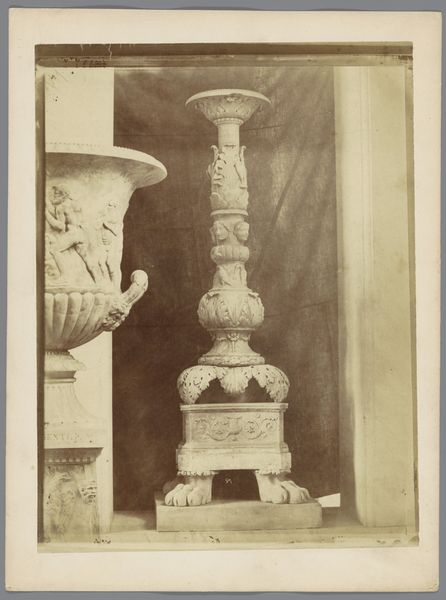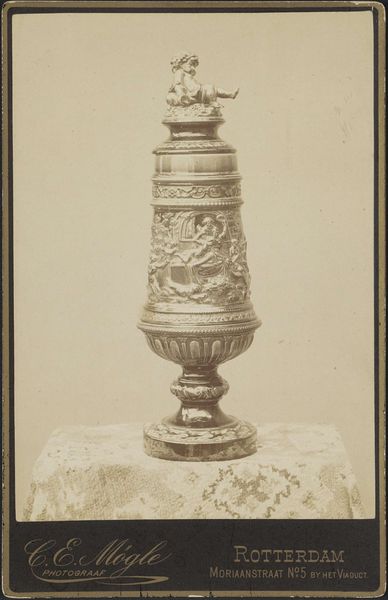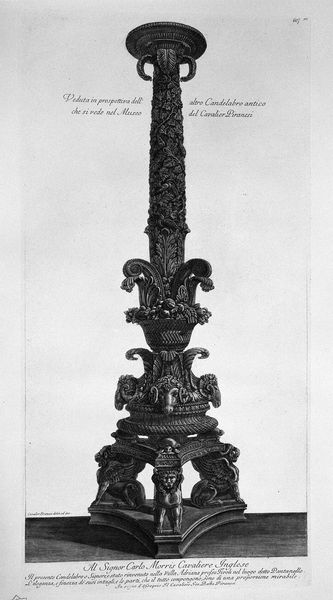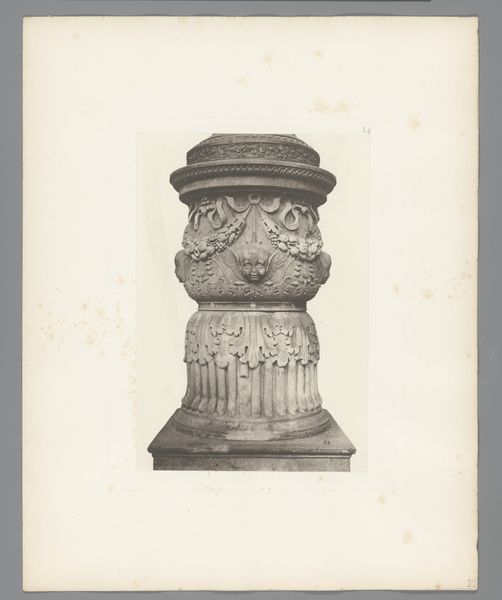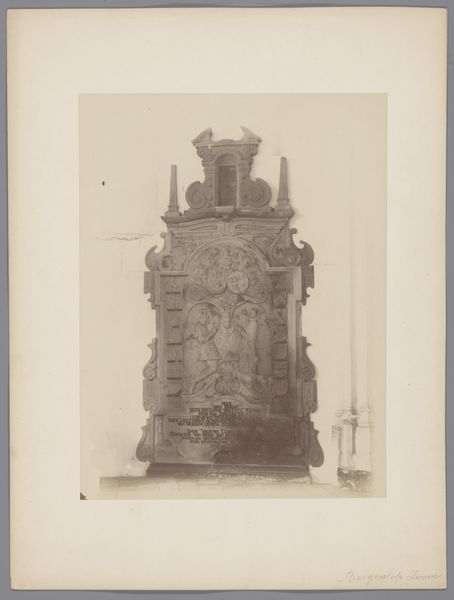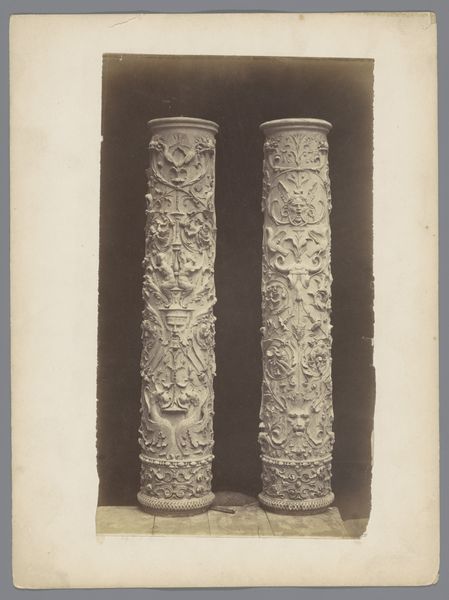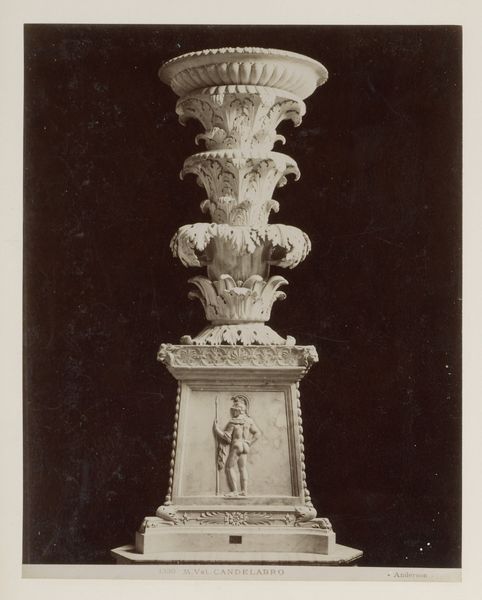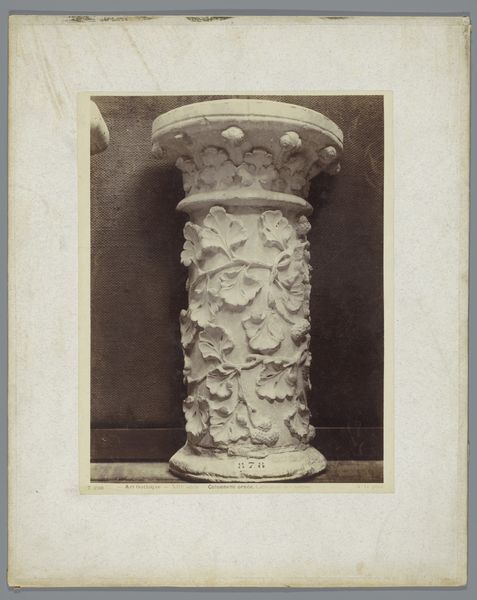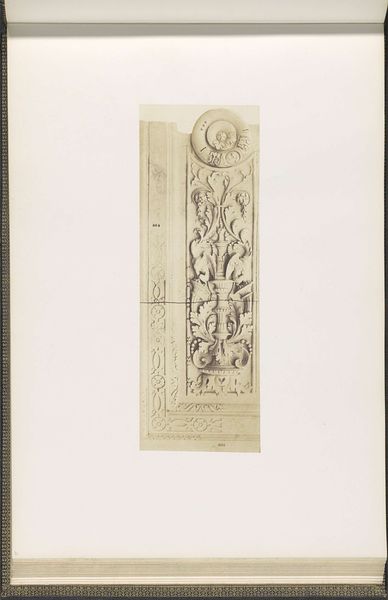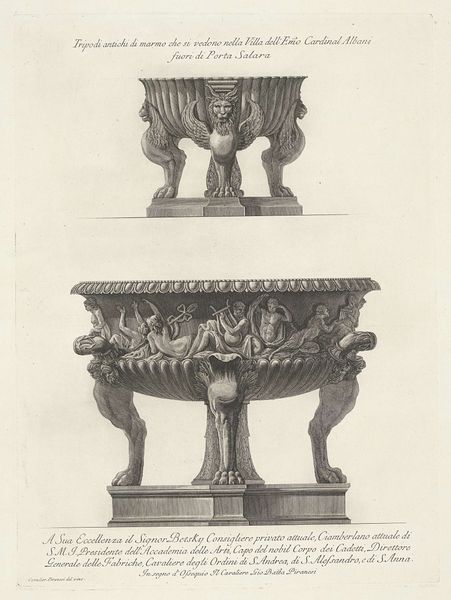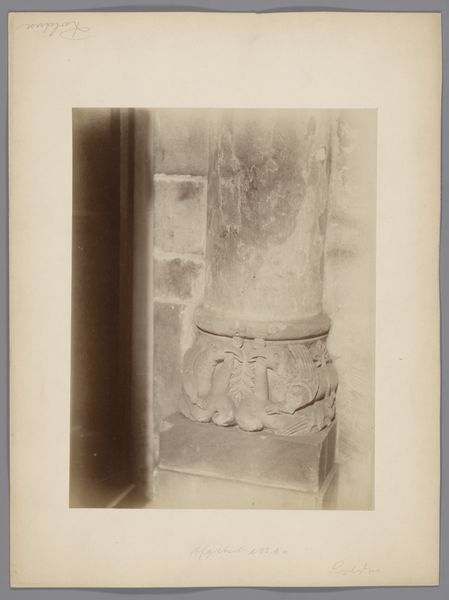
Dimensions: height 280 mm, width 137 mm, height 620 mm, width 438 mm
Copyright: Rijks Museum: Open Domain
Editor: Here we have Louis-Emile Durandelle's photograph of a *Gedecoreerde zuil met reliëf ornamenten* (Decorated column with relief ornaments) dating from around 1878-1881. The amount of detail packed into this relatively small section is incredible, it’s almost overwhelming. As a Historian, what's your take on a piece like this? Curator: This photograph speaks volumes about the cultural aspirations of the Third Republic in France. The Paris Opera, Garnier's Opera, was intended as a monument, a showpiece but it had political weight beyond its function, wouldn't you agree? Editor: I hadn't considered its political implications... Curator: Consider the period. The Franco-Prussian War had ended, the Commune had been suppressed, and France was eager to project an image of stability and grandeur. What better way to do this than through architecture and public works that showcase the nation’s artistic and technical prowess? Do you see any indication of how this ornamentation reinforces this perspective? Editor: The ornamentation does appear quite traditional and perhaps reassuringly ordered after a period of immense upheaval. The relief also strikes me as trying to express values with historical roots in prior periods. Curator: Precisely! This Neoclassical style draws upon the perceived order and rationality of ancient Greece and Rome, which had become a language of power since Napoleon's time. Durandelle’s photograph isn't simply documenting art; it's recording how the state wanted to be seen – refined, cultured, and in command. A visual tool in the construction of national identity. How do you think its accessibility plays into this idea? Editor: Wow, framing the image as more than documentation, but an intentional statement makes a lot of sense. I will look at photos differently from now on!
Comments
No comments
Be the first to comment and join the conversation on the ultimate creative platform.

